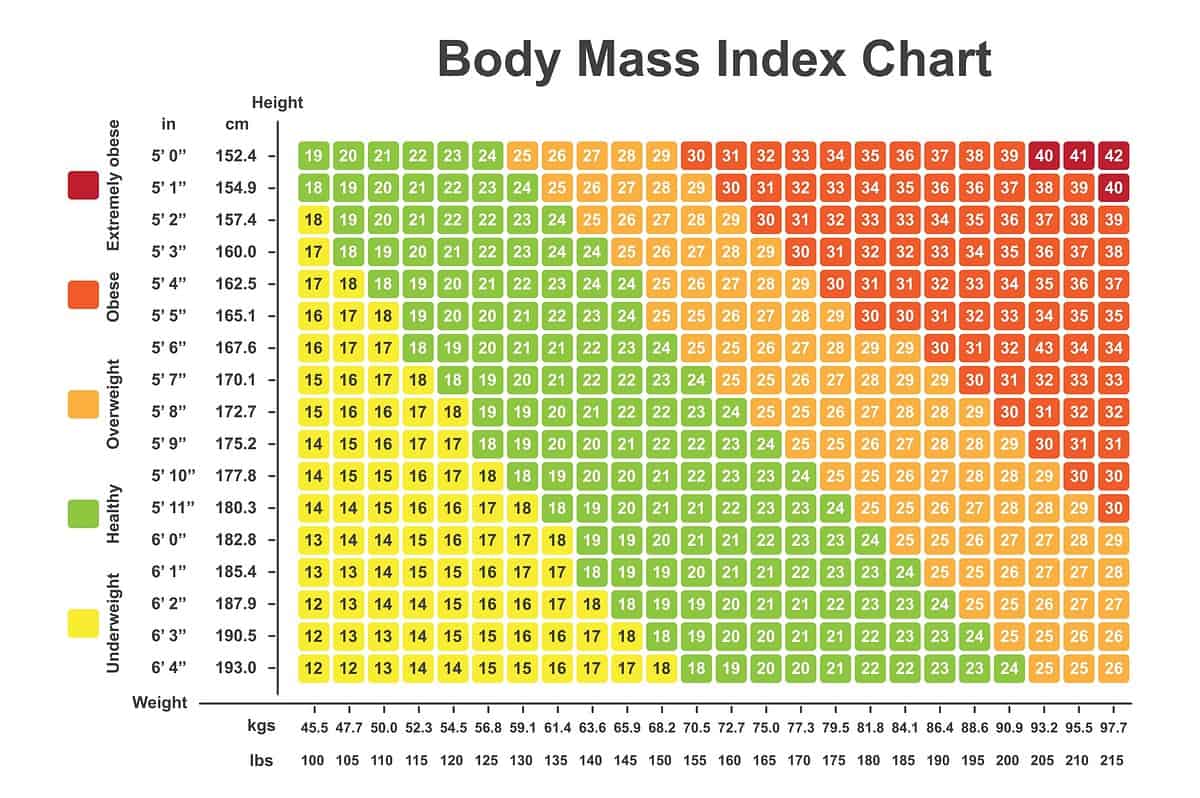

A Straightforward BMI Chart For Women (Free)
Your BMI is a great indication to know if you're currently healthy. BMI is an acronym for body mass index. Body mass index is calculated by taking your weight and dividing it by your height. There are four BMI categories: healthy weight, underweight, overweight, and obese.
Although your BMI will not directly measure your body fat, often it can closely predict the percentage of body fat, helping to understand your metabolism or the possibility of disease. BMIs are often used as screening tools but not as tools to diagnose the overall health of an individual. For example, someone who has low fat but lots of muscle can have a swayed BMI. Their BMI might say they are overweight or obese when really their weight is made up of muscle instead of fat.
Health professionals often use BMI to determine if further health assessments are required. If a BMI seems to show risks, your doctor may do assessments. These assessments can be diet evaluation, skinfold measurements, a look at family history, underweighting, or bioelectrical impedance.
Based on the chart below, you can calculate your BMI to see if it indicates you are underweight, a healthy weight, overweight, or obese. If you score below 18.5, then your BMI is underweight. A healthy weight is between 18.5 and 24.9. 25 to 29.9 is considered overweight. Anything over 30 is obese. Once you know your BMI score, read below to find out what you need to know about your BMI.

©Ali DM / Shutterstock/Shutterstock.com
Underweight
Although most people think health risks only come with being overweight or obese, this is also true for being underweight. If you're underweight, your doctor will likely help you come up with a plan to gain weight. Health risks from being underweight include osteoporosis, anemia, weakened immune system, fatigue, and irregular periods.
Healthy Weight
Maintaining a healthy weight is best for you. It allows your body to function as needed. Staying a healthy weight can reduce your risk of diabetes, heart disease, stroke, high blood pressure, cholesterol, and cancer. To maintain a weight in this category, make sure to continue eating the right amount of calories and get regular exercise.
Overweight
If your BMI is in the overweight category, then you should consider what needs to be done for you to get into the healthy weight category instead of increasing your BMI to the obese category. Reducing your daily caloric intake and incorporating some exercise into your routine will be pivotal to reducing your BMI.
Obese
If your BMI is 30 or above, it is considered to be in the obese category. If, after testing, it is true that you are obese, your doctor will likely speak with you about a plan to lose weight. Being obese is known to increase health risks and diseases. Some of these include high blood pressure, high cholesterol, type 2 diabetes, heart disease, stroke, osteoarthritis, sleep apnea, cancer, body pain, and mental illness.